ICC 1992 Cricket World Cup: Reliving the Glory
The ICC 1992 Cricket World Cup is still talked about with reverence and nostalgia by cricket fans worldwide. The tournament, held in Australia and New Zealand, was a groundbreaking event that introduced several innovations to the game of cricket. This edition featured 9 teams and a total of 39 matches. Pakistan won their first World Cup title, defeating England in the final. From colored clothing to the Duckworth-Lewis method, the 1992 Cricket World Cup was indeed a memorable affair. Let’s take a trip down memory lane and revisit some of the highlights and lesser-known facts of this historic tournament.
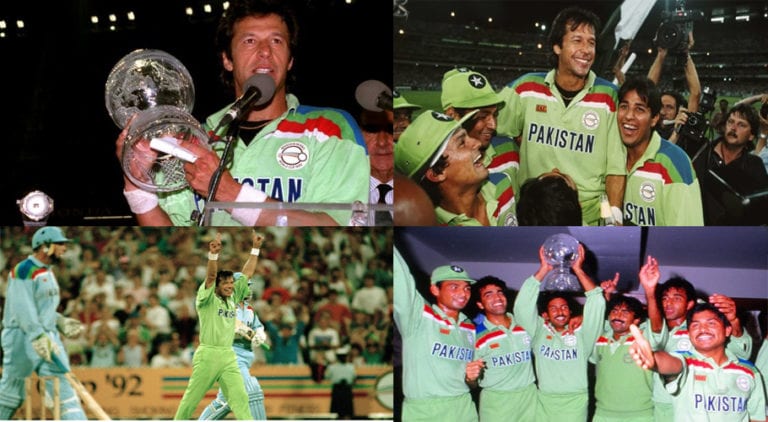
Innovations that Shaped Modern 1992 Cricket World Cup
Colored Clothing:
The 1992 Cricket World Cup marked the first instance of teams donning colored kits and playing with a white cricket ball in international cricket. This change brought a vibrant and modern twist to the game, distinguishing one-day matches from traditional test cricket.
Day/Night Matches:
Another groundbreaking feature introduced in the 1992 World Cup was the concept of day-night matches played under floodlights. This innovation not only added a new dimension to the tournament but also increased its popularity, especially among television viewers worldwide, making cricket more accessible to a broader audience.
Fielding Restrictions:
For the first time in a World Cup, fielding restrictions were implemented during the non-power playovers. With only two fielders allowed outside the 30-yard circle in the first 15 overs, the rule encouraged aggressive batting in the early stages of the innings, leading to higher-scoring matches and enhanced entertainment for spectators.
Rain Rule Introduction:
One of the most contentious moments of the 1992 World Cup was the introduction of the Duckworth-Lewis method to adjust targets in rain-affected matches. The semifinal between South Africa and England witnessed a controversial calculation that left fans and players alike bewildered, underscoring the importance of a fair and effective rain rule in cricket.
1992 Cricket World Cup: Memorable Performances and Events
Jonty Rhodes’ Fielding Prowess:
Jonty Rhodes’ acrobatic fielding and the iconic run-out of Inzamam-ul-Haq in a crucial match against Pakistan remain etched in the memories of cricket enthusiasts. Rhodes’ athleticism and agility on the field set a new standard for fielding excellence in the sport.
Australia’s Controversial Exit:
Australia’s journey in the 1992 World Cup was marred by controversy when they were eliminated due to rain in their final group match against the West Indies. This incident sparked debates about the tournament format and raised questions about fairness and equity in cricket.
Martin Crowe’s Captaincy Brilliance:
New Zealand’s captain, Martin Crowe, emerged as a standout performer in the 1992 World Cup, leading his team with exceptional captaincy and stellar batting displays. Crowe’s leadership and strategic acumen guided New Zealand to the semi-finals, where they showcased their talent on the world stage.
The Triumph of Pakistan: The Cornered Tigers
Imran Khan’s Leadership and Historic Tiger T-Shirt:
Imran Khan’s inspirational leadership and strategic acumen propelled Pakistan to its first-ever World Cup title in 1992. Khan’s iconic ‘cornered tiger’ speech and the lucky tiger t-shirt became symbols of Pakistan’s indomitable spirit and determination to succeed against all odds. Details of the events are:
The captain of Pakistan showed up to the coin toss against Australia wearing his lucky tiger t-shirt, giving a message to his team:
“Play like a cornered tiger; you know when it’s at its most dangerous.”
This made sense because, throughout the tournament, the chances of Team Pakistan making it to the semifinals looked slim to none. They had only won one out of their 5 previous opening games, and to have any chance of making it to the semifinals, they had to win all of their remaining games, beginning with Australia, hence, they had to fight like “cornered tigers.”. They beat Australia and Imran Khan led the Pakistan team to the finals against England.
In the final coin toss against England, Khan wore his tiger t-shirt again (which would also be the final time) and was asked again about the t-shirt, to which he praised his team before responding: If the team plays like tigers, he won’t mind if we win or lose.
Pakistan defeated England in the final match. Khan took the winning last wicket himself. It was Pakistan’s first World Cup triumph. The team celebrated as fireworks lit up the night sky in Melbourne. At age 39, Khan retired from cricket shortly after Pakistan’s historic win. The 1992 Pakistani World Champions would forever be known as “The Cornered Tigers.”
Inzamam-ul-haq’s Debut:
The 1992 World Cup marked the international debut of batting maestro Inzamam-ul-Haq, who played a pivotal role in Pakistan’s triumph with his aggressive and impactful batting performances. Inzamam’s talent and flair were on full display during the tournament, solidifying his status as one of Pakistan’s cricketing legends.
Wasim Akram’s all-round brilliance:
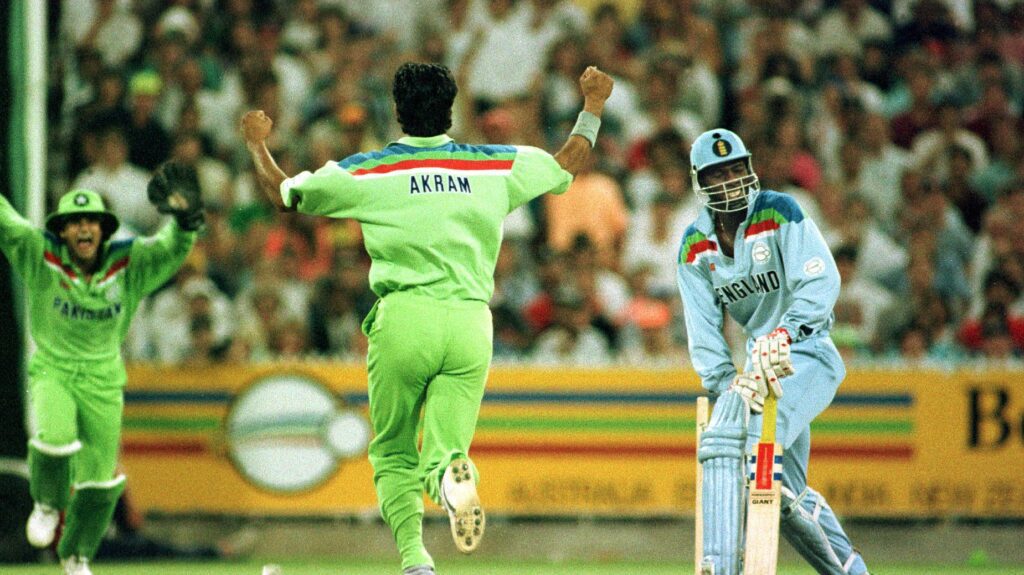
Wasim Akram’s exceptional all-round skills were instrumental in Pakistan’s success in the 1992 World Cup. Akram’s ability to swing the ball and deliver crucial performances with both bat and ball earned him accolades, making him a key figure in Pakistan’s championship campaign with the 18 highest wickets in the 1992 Cricket World Cup. In the final, against England, he was awarded man of the match for his innings of 33 runs off 19 balls, which pushed Pakistan to a score of 249 runs for 6 wickets.
Javed Miandad’s Tactical Acumen:
Despite battling age and injuries, Javed Miandad played a pivotal role in Pakistan’s World Cup triumph, showcasing his tactical astuteness and grit on the field. Miandad’s seasoned experience and leadership were instrumental in guiding Pakistan to victory in crucial matches throughout the tournament. In the final match against England, with the 2 early wickets falling, Imran Khan and Javed Miandad scored a backbone innings partnership of 139 runs that chanced Waseem Akram and Inzimam ul Huq to play an aggressive innings, resulting in a final score of 249/6.
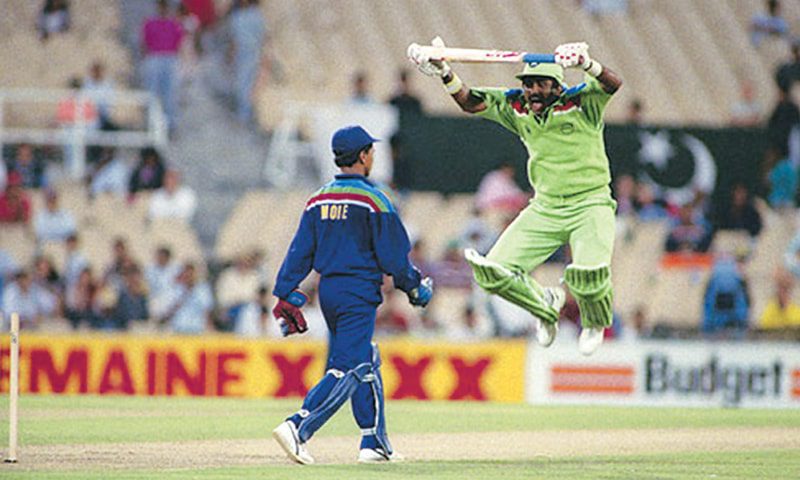
Dropping of Waqar Yunis from the WC:
Known as Bhurewala Express, the deadliest and fastest of that time, specializing in reverse swing and toe-crushing Yorkers, he was scheduled to travel to Australia for the biggest event of his career, the ODI World Cup, under the captaincy of Imran Khan. But a stress fracture in his back robbed him of the opportunity and he was replaced by Aqib Javed, incidentally.
Aqib Javed’s Heroics in the Final:
Aqib Javed’s memorable performance in the final against England, where he claimed three crucial wickets for just 21 runs, played a decisive role in Pakistan’s triumph. Javed’s bowling prowess and composure under pressure epitomized Pakistan’s fighting spirit and determination to clinch the World Cup title.
In conclusion, the ICC 1992 Cricket World Cup remains a watershed moment in the history of the sport, with its innovative changes and unforgettable performances shaping the modern landscape of cricket. The tournament showcased the resilience, skill, and passion of players from around the world, highlighting the true spirit of cricket as a game of unwavering determination and sportsmanship. Let’s continue to celebrate the legacy of the 1992 Cricket World Cup and the enduring memories it has left behind for generations of cricket fans to cherish.

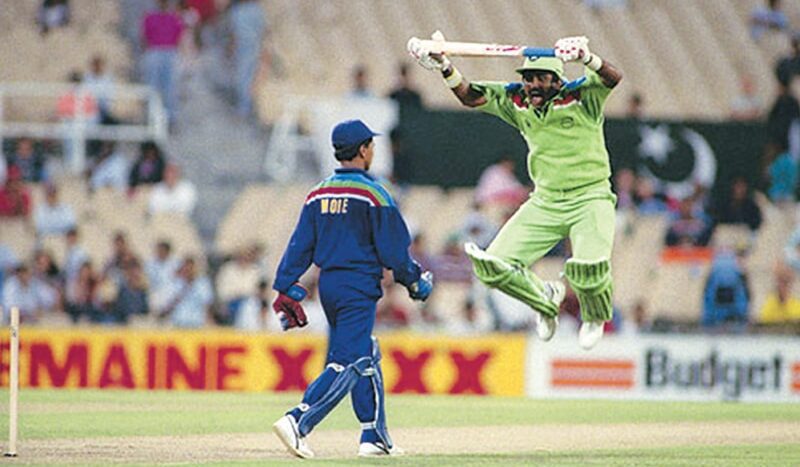
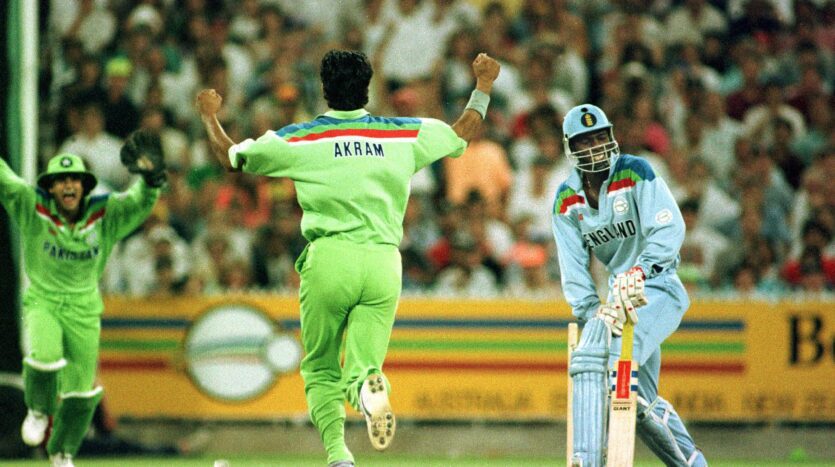
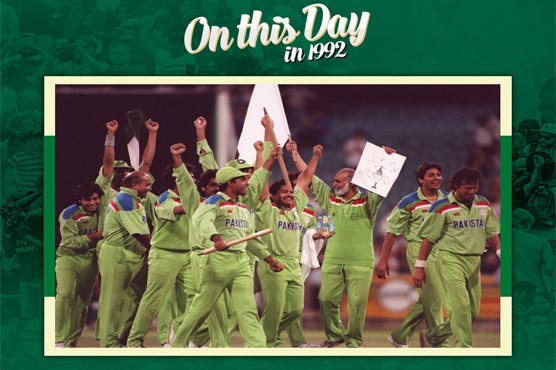
I remember those days of my school life , given a holiday , the very next day.
Also, this WC brought an opening of a revolutionary flame in the form of IK.